The satsuki azalea community decided long ago what their preferred top dressing would be – mountain moss.
Also known as yamagoke (“mountain moss” in Japanese), this moss is typically harvested in China and packaged in Japan.
It can be used interchangeably with white sphagnum moss, but there are three benefits that make it popular for species like azalea that require a top dressing year round: it stays in place when it dries out, it re-wets easily, and satsuki roots like to grow into it.
An additional benefit that both mountain moss and white sphagnum moss offer is that they have a slight acidifying effect on the water. As a simple test, I added water to a bowl of mountain moss and after one minute the pH dropped from 6.7 to 5.7.
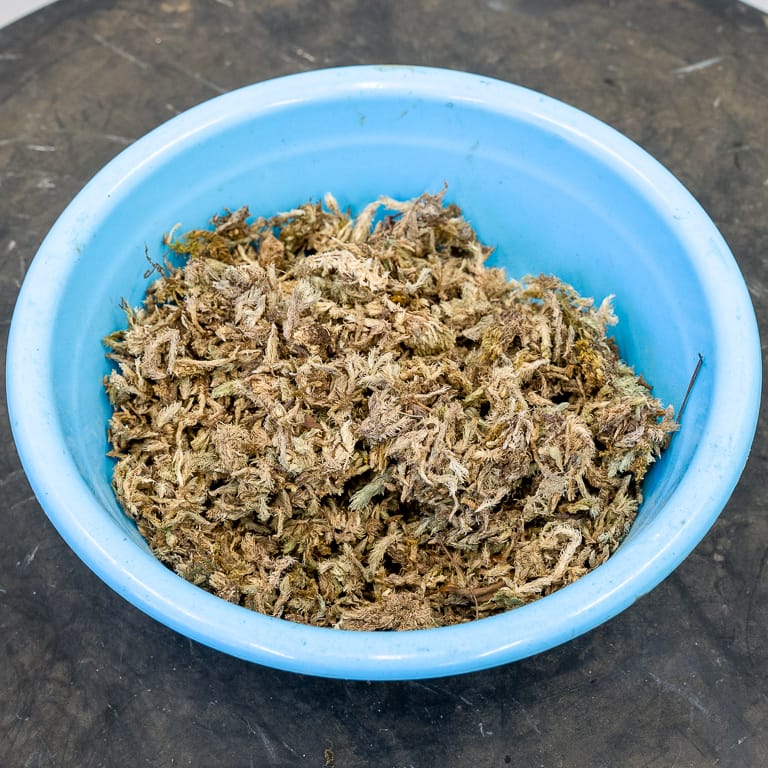
Dry mountain moss
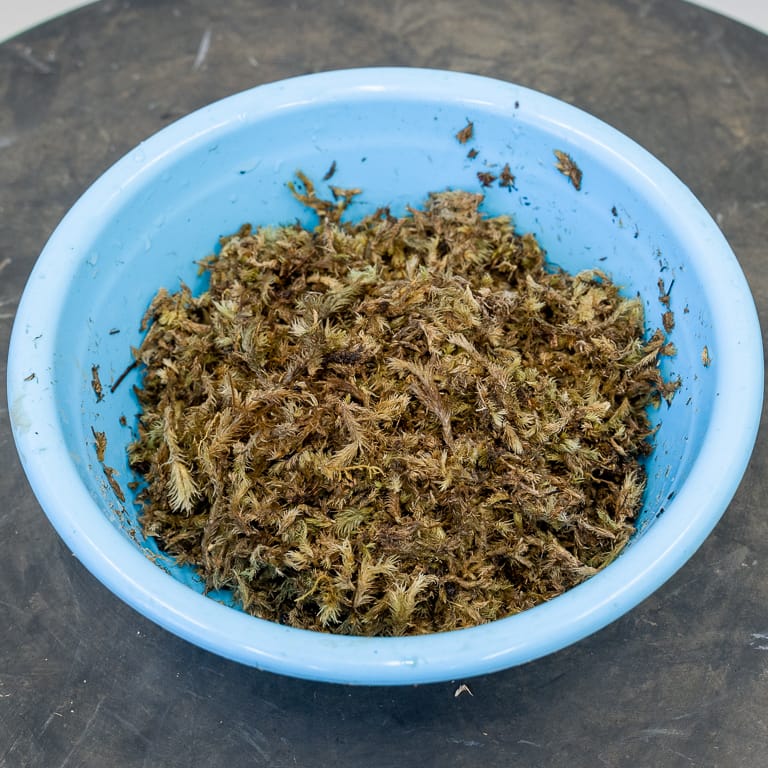
Wet mountain moss
Although not all azalea growers use mountain moss as a top dressing, all of the ones that I’m familiar with use either mountain moss or white sphagnum moss. This is because unlike other temperate bonsai, azaleas can suffer significant root damage after wilting just one time. And if an azalea wilts several times during the growing season, there is a good chance it will be harder to keep the tree healthy until the roots recover.
I apply a fresh layer of moss to my azaleas in spring and spruce up trees that need it throughout the growing season. Here’s what the process looks like.
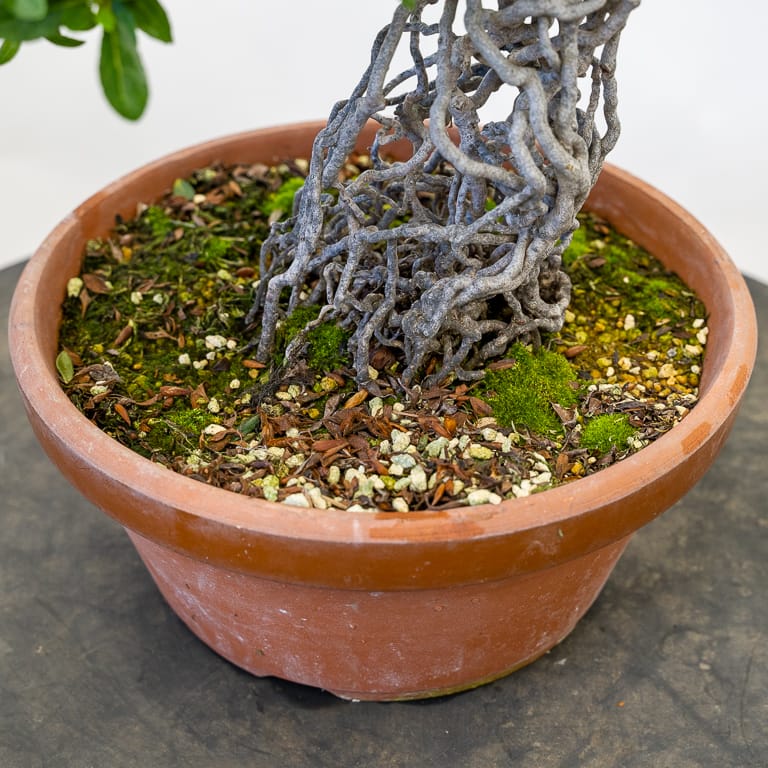
Satsuki azalea – much of the top dressing has washed away
The first step is removing the top layer of moss and soil. I can do this with bent nose tweezers or chopsticks.
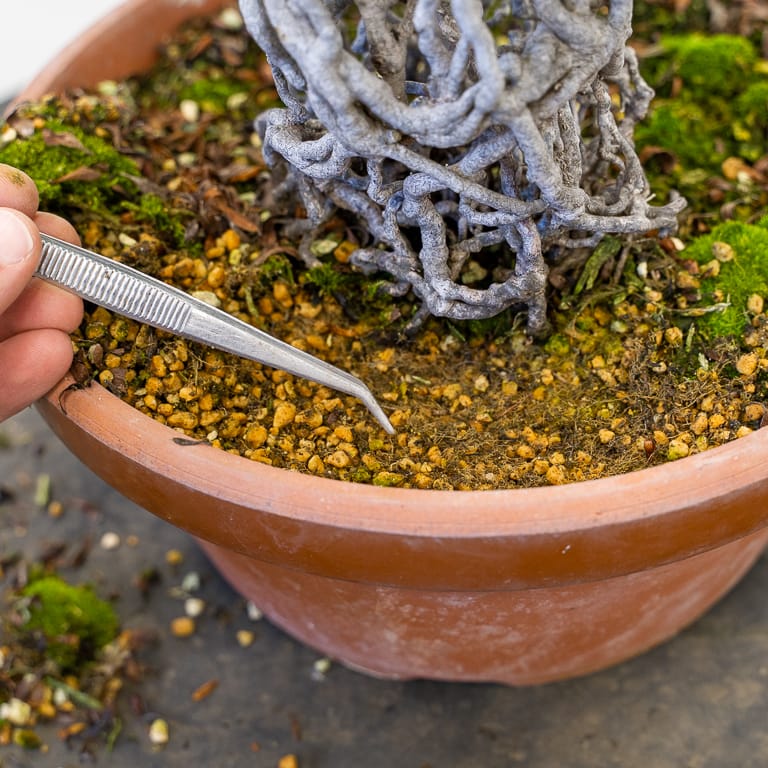
Removing the surface soil
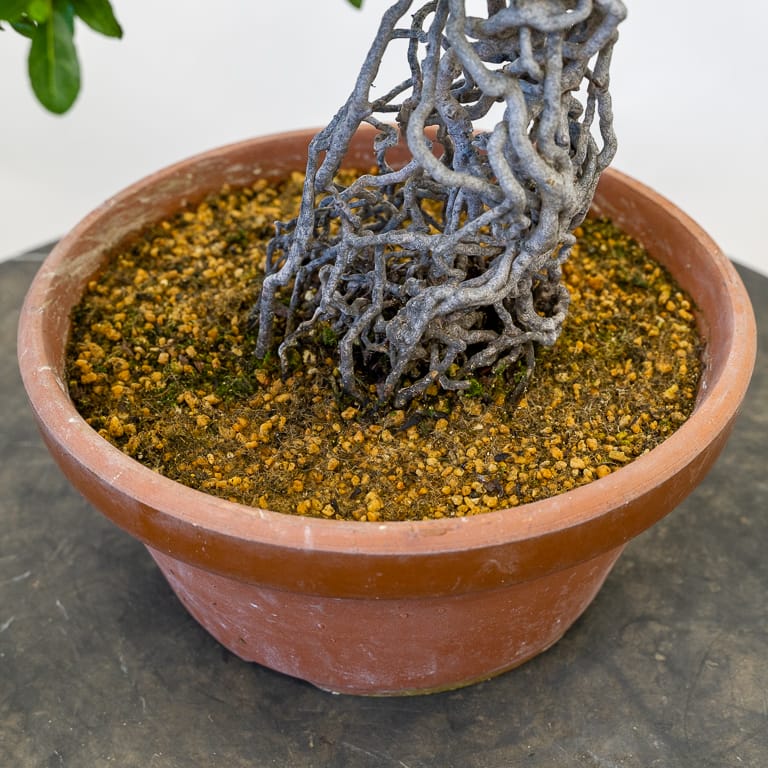
Top dressing removed
Once the old soil and moss have been cleared away, I apply a layer of mountain moss and press it firmly into place.
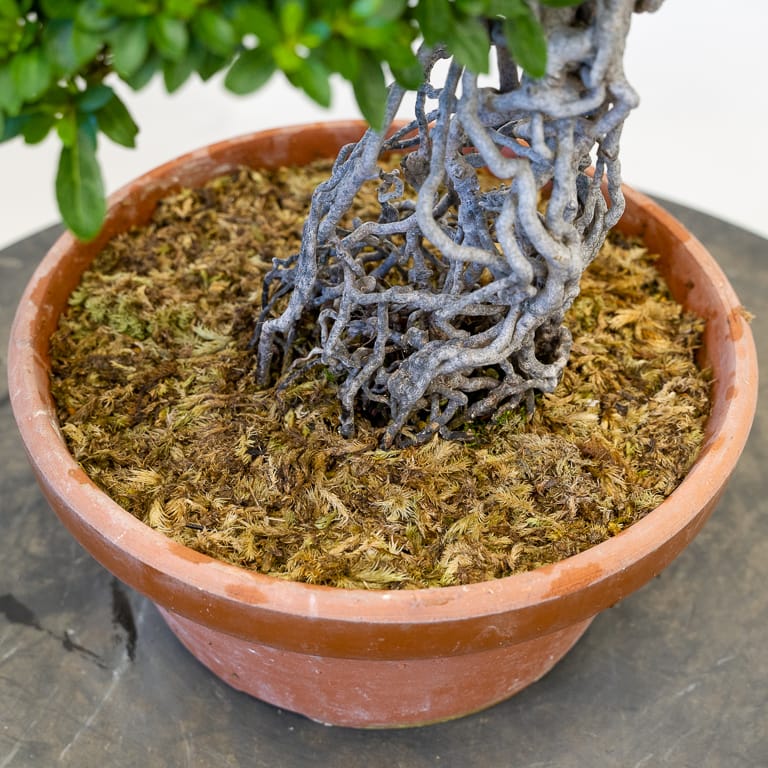
Mountain moss top dressing
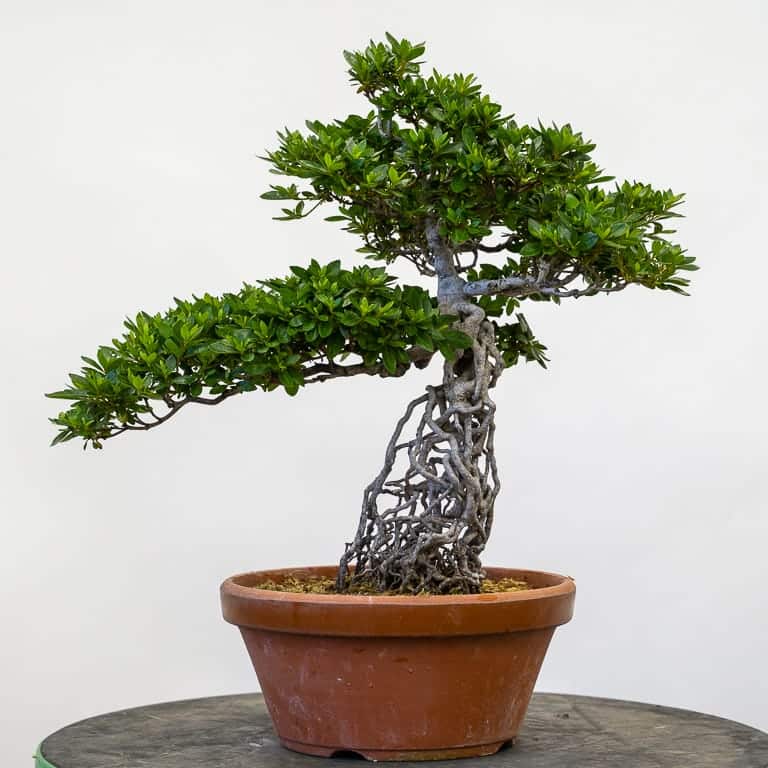
Exposed root azalea – Hikari-no-tsukasa, 17″
After a few months, I can expect green moss to start growing on top of the mountain moss.
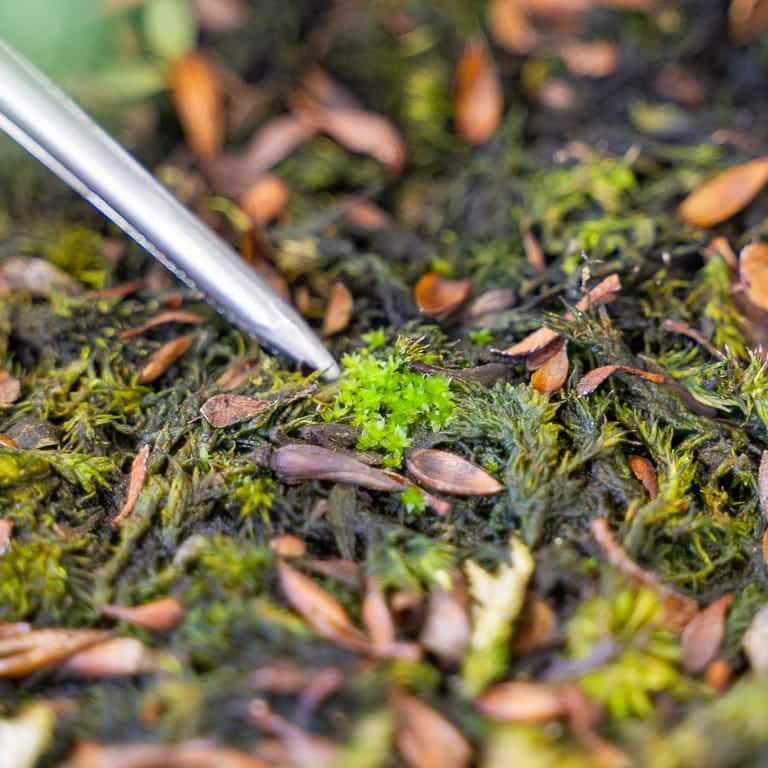
Moss starting to grow
In some cases, I get more moss than I need.
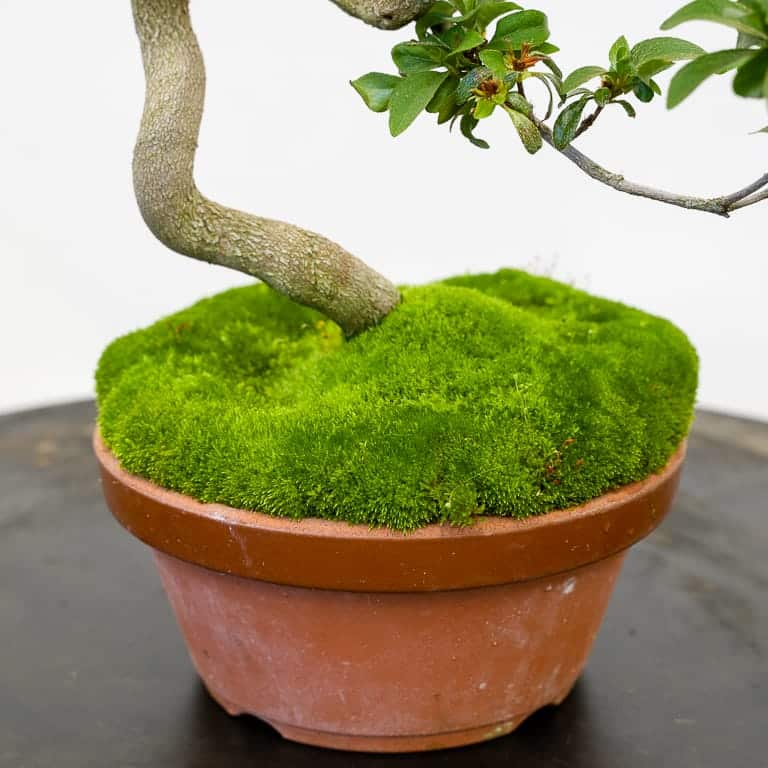
Thick green moss
That wraps up the mini-series on watering and top dressings for now. It’s back to bonsai work for the next post!
Subscribe to Bonsai Tonight
New Posts Delivered Every Tuesday and Friday
Edward Stanton says
Jonas, Do you use yamagoke moss on other trees besides satsukis?
Jonas Dupuich says
Hi Ed, I don’t – for other trees I use the white sphagnum moss. I don’t know that there’s a reason not to use mountain moss on other trees beyond cost or convenience, but I haven’t seen it done here or in Japan.
Edward Stanton says
Thanks, Jonas. Sometimes I use yamagoke on other trees besides satsukis, mixed with local moss. I prefer it to sphagnum because it’s not as white and blends in color with topsoil and topdressing. All best!
Jonas Dupuich says
Thanks, Ed! Good to know it’s worked well on your other trees – I may try it myself!
Nathan Daly says
Thanks for the post, Jonas. Very helpful information for us in the hot Central Valley. I have a good layer of local moss on most of my azaleas, but this is a solid solution to kickstart those that need it.
Regarding wilting, I drastically cut back a strong-growing, leggy azalea after bloom in early June and it popped back buds everywhere, as expected. However, those buds stalled and the remaining foliage has severely wilted over the past two weeks. The tree is in mostly shade now, pot is not overheating and it’s getting mist multiple times per day.
Any other recovery advice?
Thanks!
Jonas Dupuich says
Thanks Nathan! Sorry to hear about the azalea. The only other thing that comes to mind is to avoid keeping the soil too wet. The two most likely candidates are poor soil or pathogens in the soil. Shade, misting, and accurate watering is the best course for now and I’d look to repot next spring if the tree recovers.
Nathan Daly says
Gracias. I think that, despite the heat, wet soil is my likely culprit. It was repotted in kanuma/pumice last year and percolates thoroughly. I think my sun positioning in early summer was a poor choice and I was overcompensating on the water. Working to remedy that and really appreciate the input.
Tom Regelski says
Good article for us beginners.
Jonas Dupuich says
Thank you Tom!
David J Starman says
jonas, the watering mini-series was excellent. thanks.
Jonas Dupuich says
Thanks Dave!
Gabe says
Great series, Jonas; always great info from your blog posts!
A question you may not be able to answer publicly. What is your source of yamagoke moss? I assume that the NZ moss one can find at big box stores is what you call “white moss.” Thanks!
Jonas Dupuich says
Thanks, Gabe! Yes, the New Zealand moss, aka orchid moss, aka white sphagnum moss is available at big box stores and online. As for the yamagoke, I’ve imported it from different suppliers in Japan. I have yet to find a consistent source for it as the packaging and the moss itself can be different from year to year.